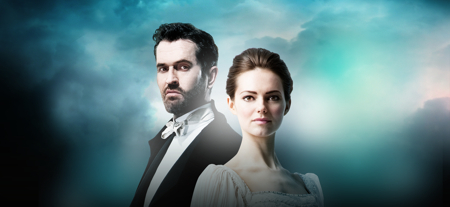Published by Dale & Co
Pygmalion, Garrick Theatre
It is very difficult watching a play when the text has been almost entirely appropriated by one of the most successful theatrical partnerships in history, and made into the libretto of one of the greatest musicals of all time. It’s not that George Bernard Shaw’s Pygmalion cannot now exist independently of Lerner and Loewe’s legendary treatment in My Fair Lady; it’s simply that the two have become symbiotic to the extent that you can’t help hearing a cue for a song in just about every scene.
But the problem with Philip Prowse’s Pygmalion is not so much that it lacks bursts of ‘Why can’t the English’ and ‘Wouldn’t it be loverly?’; it’s that a great deal of Shaw’s sizzling wit, sociological perception and political acumen fail to find adequate expression in Rupert Everett’s incarnation of Henry Higgins. The play begins rather heavily with Wagner’s ‘Ride of the Valkyries’ (not sure why), which prepares us for nothing but Everett’s interminable brooding and indulgent stream of pomposity. I don’t like beginning a theatre review with ‘the problem’, but there you have it.
In mythology, Pygmalion was a Cypriot sculptor who fell in love with one of his own statues. So besotted was he with his ivory creation that he beseeched Venus to transform it into flesh and blood. For some reason, the goddess obliged: Pygmalion and his former statue married, had babies and lived happily ever after. But Everett seems far too in love with himself even to bother wiping the dust from his creation, let alone contending with the emotional traumas and psychological complexities inherent in human relationship.
Ah, that’s what Shaw intended, I hear you say. Well, up to a point. Higgins is undoubtedly selfish and immature, if not at times an ignorant and insensitive bully. I’ve known a few. But he’s also evidently a convivial fellow of intellectual wit and sparkling charisma (of whom I’ve known fewer). While the process of crafting a duchess from the squashed cabbage leaves of Covent Garden would certainly have been a lot of hard work, Shaw makes it abundantly clear that Wimpole Street is also a very great deal of fun, so much so that Eliza yearns to return. Unfortunately, I just can’t believe in this production that she’d be remotely homesick. In fact, if I’d been Eliza and spent months cohabiting with Everett’s Higgins, I’d have felt an overpowering urge to ladle down the gin, kick him in the balls and join the suffragettes.
It is against this moody, swarthy presence that everyone else has to play their part. And (thankfully) they do it with aplomb. Peter Eyre is superbly lugubrious as Colonel Pickering. As he and Higgins attempt to bring Eliza to life by instilling her with the vowels and manners of a duchess, Eyre actually makes the better sculptor. Diana Rigg’s impeccable Mrs Higgins has all the command and gravitas you’d expect from one of the great dames of British theatre. And Michael Feast’s Alfred Doolittle is pure delight from beginning to end: when he speaks of the economics of poverty, middle-class morality and the politics of church and chapel, he conveys a highly intelligent grasp of the complex undercurrents of Edwardian society. But there is something seriously amiss when I look forward more to each entrance of Freya Dominic’s wonderful parlour maid than I do to Everett’s boorish Higgins.
Without doubt, the greater glory goes to Kara Tointon, whose Eliza really is a class act. She begins as a stroppy, tantrum-flinging chimp and ends a superbly aristocratic goose, reminding me a little of the late, great Wendy Hiller, whom Shaw himself insisted on casting as Eliza in the 1938 film. I was fortunate to know Dame Wendy, and she talked to me about Shaw and Pygmalion over endless cups of tea in her fragrant English country garden in Beaconsfield. The role of Eliza was, of course, pivotal to her career, as it will doubtless prove for Tointon, whose progression from soap opera to classical theatre is as assured as her transformation from glottal abomination to RADA’s best RP. She could easily dance all night and still leave her audience begging for more.
I have no idea why Prowse opted for such a dingy set (except that he designed it) and so much hollow, wing-to-wing shouting between Eliza and Higgins: Shaw’s dialogue is almost poetically relational, and better expressed with subtle physical activities than in recumbent bawling across the entire width of the proscenium. I also don’t understand the decision to end with Eliza marrying Freddie Eynsford-Hill to strains of ‘Land of Hope and Glory’ (again, no idea why): Shaw may have speculated as much (on the wedding, that is; not the Elgar), but he pointedly rejected such a twee conclusion for his drama. And notably even My Fair Lady resisted the overpowering Broadway yearning for a convenient happily-ever-after between Eliza and Higgins. But Prowse’s directorial shortcomings aside, this is a welcome revival of a masterpiece of Edwardian theatre, made all the more welcome for Kara Tointon’s vibrant, stylish and radiant Eliza.

